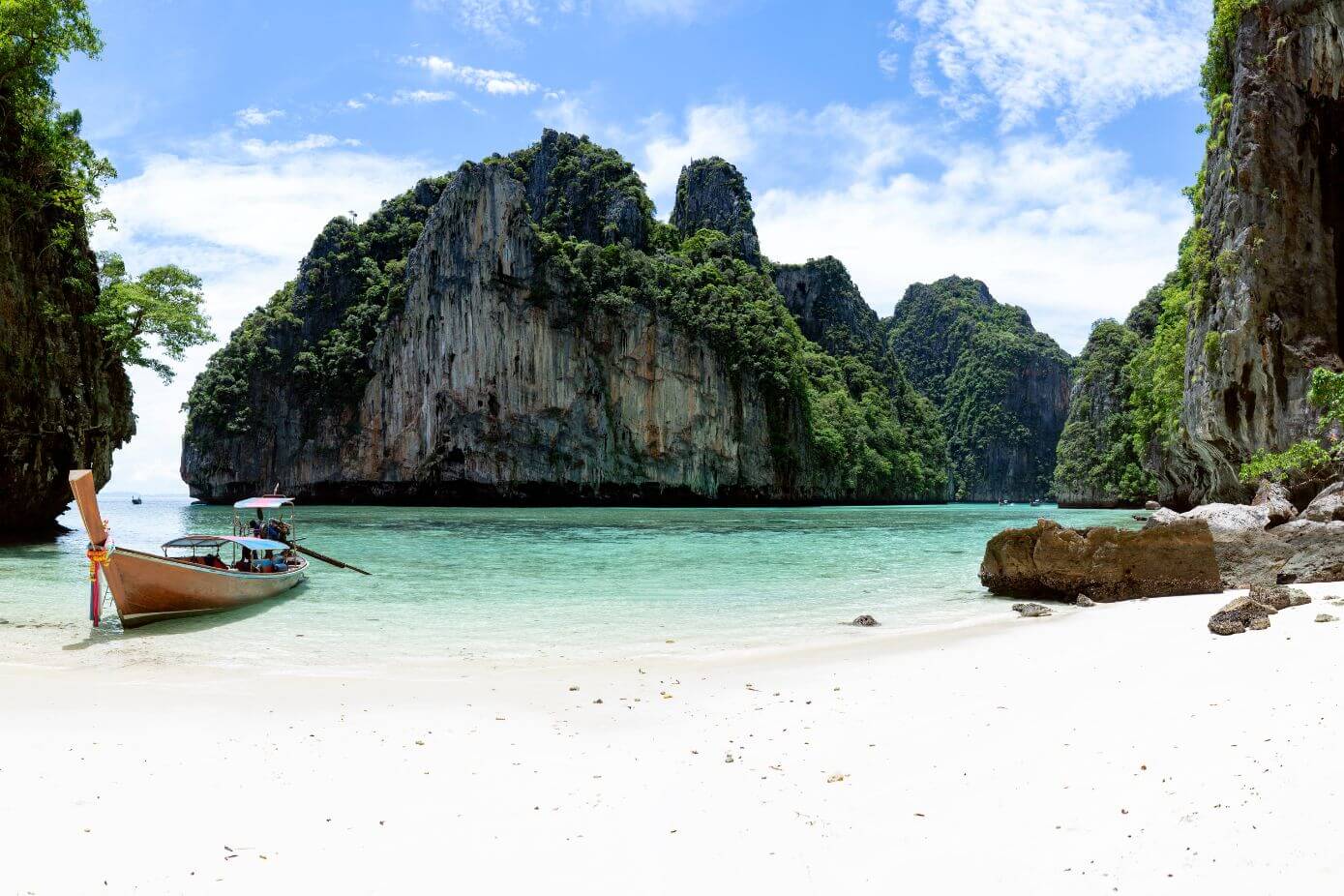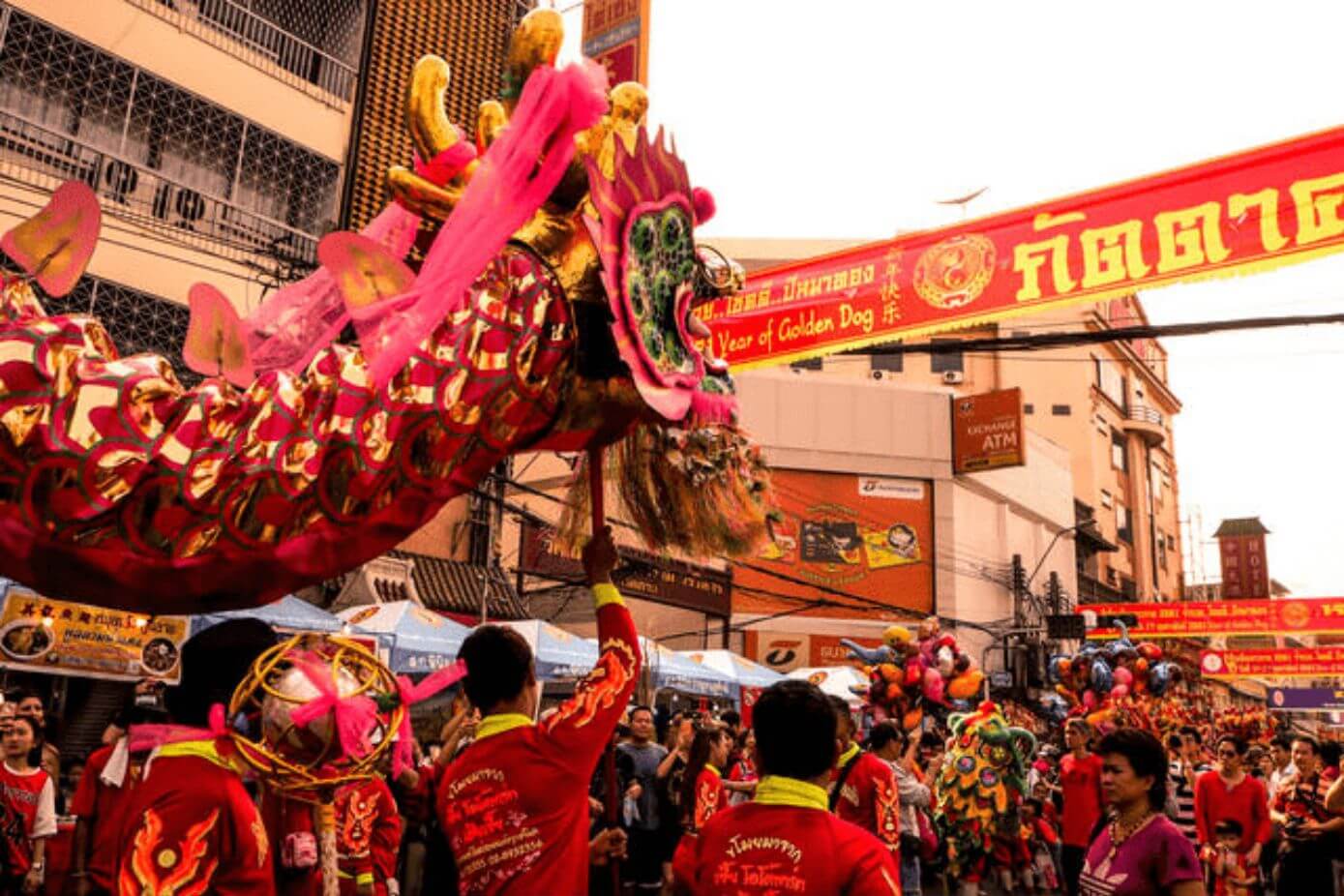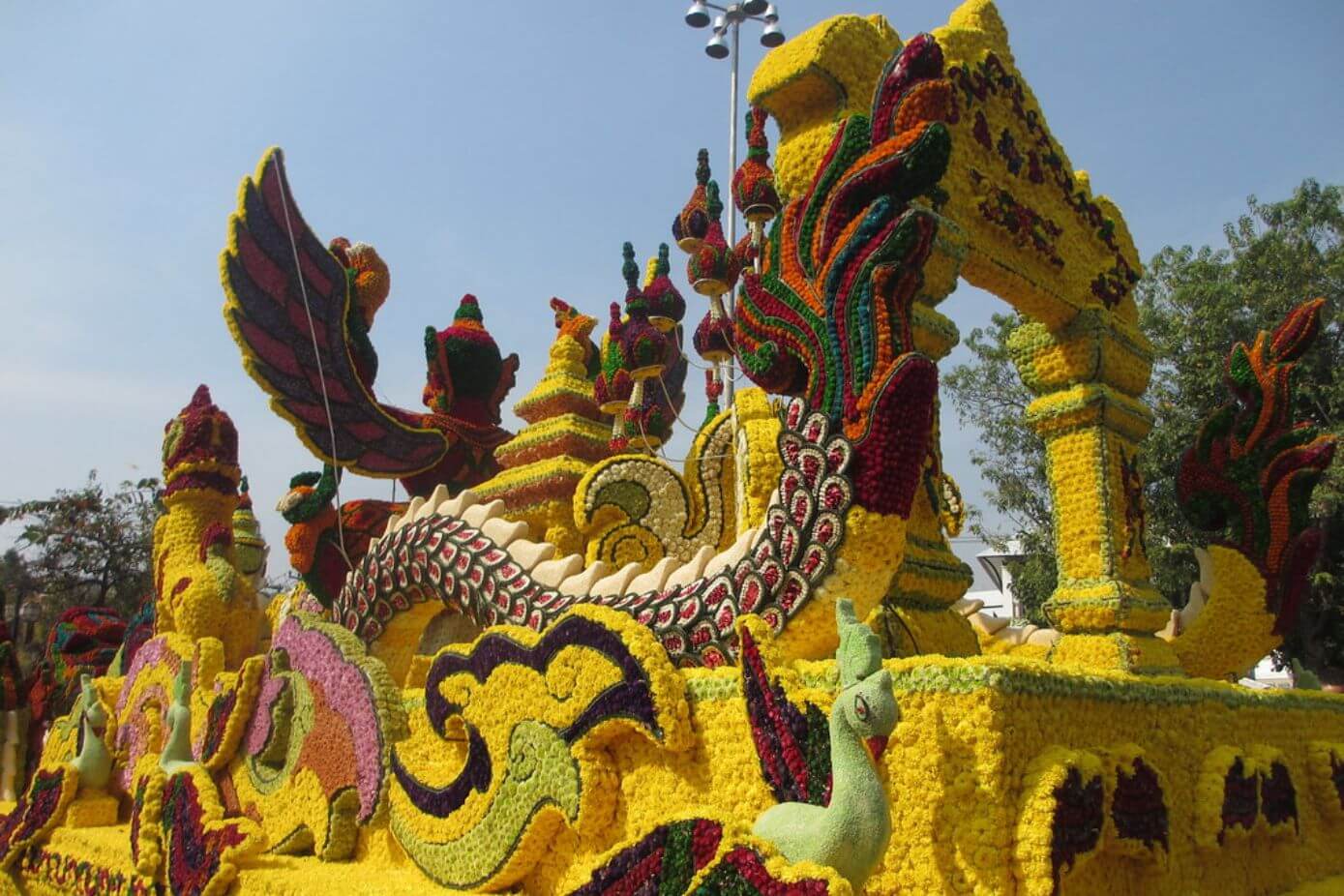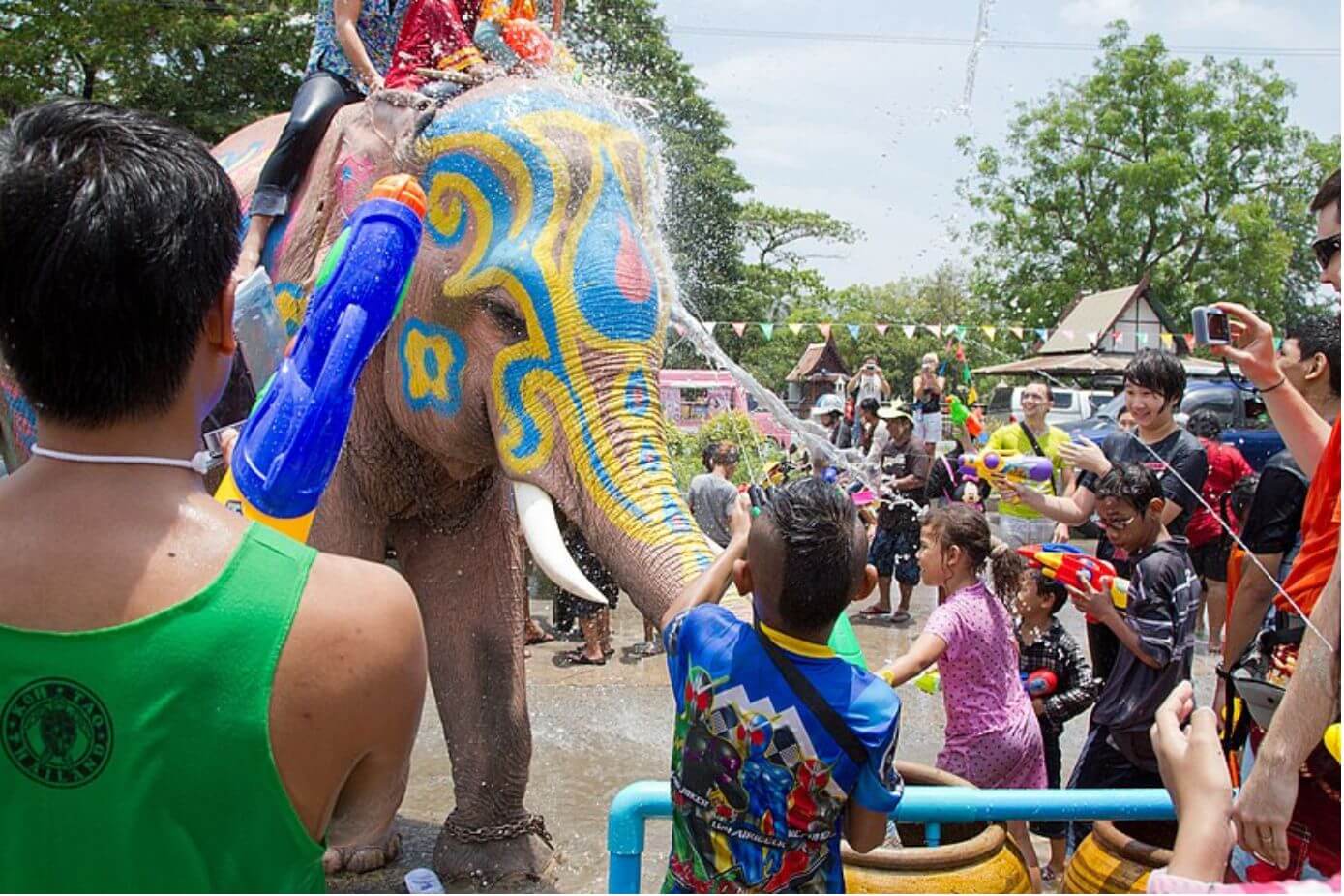Although the climate varies throughout Thailand, you can visit the country all year round. The best time to visit Thailand is from November till early April when temperatures range from 29°C to 34°C.
| Travel Seasons | Min/Max Temperature | Season |
| March to July | 30-34°C | Summer – Hot and humid |
| July to October | 23-29°C | Monsoon – Heavy rainfall |
| November to February | 18-32°C | Winter – Cool and pleasant |
High season : November to March
Best time to visit Thailand and for good weather
Thailand offers the best of its weather during the winter with average of 32°C high to 18°C low. Sun, dry weather, low humidity and the surf, all combine to make it the best time to visit Thailand.

Good weather means busy Thailand: Christmas and New Year holidays bring a lot of people and inflate prices.
Winter is peak tourist season in Thailand. I advice to book your tickets and accommodation in advance to avoid getting disappointed. Popular hotels are usually booked up 3-6 months in advance.
Shoulder season : April to June and September to October
Best time to enjoy the coast
The weather is getting better, but we’ve not hit peak tourist season yet. April to June is generally very hot and dry, with an average temperature of 30°C. But the sea breezes in coastal areas provide natural air-con.
In September and October, the beaches are not as crowded, the gulf coast islands are your best bet, for avoiding the occasional rain showers.
Low season : July to October
Best time for budget travelers
They say there isn’t a bad time to visit Thailand, but there is an inconvenient time: Monsoon season.
It starts from July and the next three months are the wettest and the least appealing ones to head to Thailand. Monsoon season ranges from afternoon showers to major flooding, but the rain is usually in short, intense bursts.
The streets get flooded, the air is stifling and humid, and you can’t do anything but sit in your hotel room and look outside at the water cascading down the building.
The low season means lower prices and smaller crowds, but there are also downsides. Boat service is limited and some islands just shut down. If you choose the low season, I recommand to be flexible with your travel plans.
Thailand month by month
January
January offers great weather conditions throughout the country at this time of year whether for city sightseeing or beach holidays.
With average temperature from 20°C to 30°C, cool and dry weather make it enjoyable to travel all around Thailand: Bangkok, Chiang Mai, Chiang Rai, Phuket, Koh Samui…
Diving and snorkeling are at their best during this period.
The key event is the Chinese New Year, celebrated across the country; particularly in Bangkok‘s Chinatown.

It is a one-of-its-kind experience, the street turns red and hosts exciting dragon parades, lions dances, stage shows and lots of fireworks.
February
Similar to the weather of January, February’s weather is still nice, warm, and dry with average temperature range from 22°C to 32°C.
Still in the high season, but less crowded than December and January, Thailand is sun and fun for anyone escaping colder weather elsewhere.
Beautiful islands and beaches are also good places to go — Phuket, Krabi, Khao Lak… All kinds of water activities enjoy ideal conditions.
The main event is the Chiang Mai Flower Festival (first weekend of February).

A three-day festival featuring a parade and colourful displays of chrysanthemums and the Damask Rose — a variety found only in Chiang Mai.
March
March is still a fabulous month to visit Thailand with average range temperature from 26°C to 31°C and the colder weather in the north disappearing.
This means that, during this season, you can go literally anywhere in Thailand to enjoy sun-kissed beaches and islands.
The hot and dry season approaches and the beaches start to empty out as it starts to heat up in the middle of the month.
The key event is the Makha Bucha Day.
April
April is the hottest month in Thailand with average range temperature from 29°C to 34°C. It’s not unusual for temperatures to exceed 30°C all day and night!
Hot, dry weather sweeps across the land. For beach lovers, you are almost guaranteed some blue skies and clear seas.
Even if the main tourist season is nearly ending, be sure to book your accommodation far in advance to get the best choice of hotels – the whole country is on the move for Songkran (Thai New Year of the Water Festival).

May
May marks the beginning of the rainy season. The weather starts to get extremely humid with average temperature range from 28°C to 34°C.
A great month to visit Thailand. Prices on hotels and flights are low bringing great value for visitors. For guaranteed sunshine on the beach, stick to the east coast.
June
Thailand can expect an average of 15 to 22 days of rain in June with average temperature range from 28°C to 34°C.
In some parts of the country, the rainy season is merely an afternoon shower. The rain is usually short-lived, occurring in short bursts in the afternoon or evening, leaving the rest of the day for music and merriment.
This tourism low season is the best time to travel to Thailand to grab a shoulder season bargain, with more choices of accommodation and various different promotions.
Key events and festivals includes Chanthaburi Fruit Festival, Hua Hin Jazz Festival, Phi Ta Khon or Pattaya International Music Festival.
July
The southern islands are affected by the monsoon in July, which brings heavy rains and turbulent waves to the west coast. Wind and rain becomes more common toward the end of the month with average temperature range from 25°C to 32°C.
However, the sun is still out on the east coast beaches (Koh Samui, Koh Tao…) experiencing less showers during this season and has relatively good weather in July.

Some urban areas, such as Bangkok, remain hot and wet. To relieve discomfort, you can stay refreshed with indoor swimming pool visits and cold showers.
August
In August, the rain is widespread across Thailand, expect overcast skies and daily showers with average temperature range from 25°C to 32°C.
Like July, August is one of the best times to visit Koh Samui and the surrounding islands. Although you may still experience a few showers.
A trip to Thailand in August can be a cost-effective opportunity as it marks the middle of the rainy season and in theory, fewer visitors.
September
September is usually the wettest month of the year with average temperature range from 25°C to 31°C.
Rains do not disrupt the travel experience too much, as it rarely rains all day long. Only some rural areas are significantly affected by the rains during the wet season, such as the mountainous north around Chiang Mai.
Destinations like Bangkok offer travelers plenty to do and see, even when it’s raining outside.
October
The monsoon rains continue throughout the beginning of October but are reaching the finish line with less rainfall and lower temperatures by the end of the month (in most of Thailand).
Alongside average temperature range from 24°C to 31°C, October is a good month to travel.
Key events includes King Chulalongkorn Day, Ork Phansaa, Phuket Vegetarian Festival, Bangkok Biennale.
November
In November, the sun returns to Thailand. The rains and heat are gone or going from most of the country EXCEPT on the east coast, which receives a massive half a meter of rain in November.
The cool, dry season has arrived with average temperature range from 24°C to 31°C and it marks the beginning of Thailand’s peak travel season.
The main event of this month is Loi Krathong (Thailand Lantern Festivals).

December
December is a great time to visit most areas in Thailand with average temperature range from 21°C to 31°C and fair skies, busy beach resorts and a holiday mood.
The peak of the tourist season has returned as Thailand’s west coast beaches prepare for the Christmas and New Year rush. I recommend going at the beginning of the month to avoid the hotel surcharges over this period.
If you travel to Thailand during the peak season, I recommand to book your tickets and accommodation in advance to avoid getting disappointed. Popular hotels are usually booked up 3-6 months in advance.







